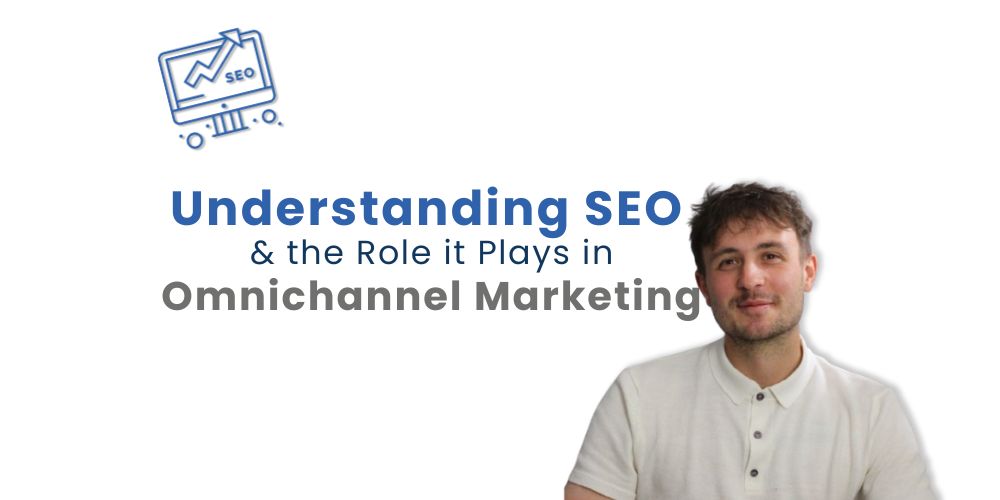What is SEO?
Search Engine Optimisation (SEO), broadly speaking, is the practice of improving a site’s ability to rank on Google, and the other search engines used, such as Bing, DuckDuckGo, etc.
Fundamentally, SEO is used as a longer-term method of generating website traffic, leads, and sales in an organic, and arguably, more consistent way. SEO enables websites to be viewed on search engines without the extra expense of paying our tech overlords (Google Ads) for visibility.
Soooo, now that we know what SEO is, what would a brand want to achieve using this practice?
Leveraging SEO to meet strategic business objectives
When we employ an SEO strategy for a client, you can bet they’re eager (and so are we!) to improve on three separate objectives. These are:
1. Increasing visibility on search engines
Arguably the most important aspect of SEO is to increase a website’s visibility on search engines, specifically Google. Without achieving this, the other two objectives will likely not be achieved.
The way I describe SEO to my family and friends is by using the example of a lawyer in Glasgow. It’s a situation that everyone can understand and never fails to get across the message (even with my granny!).
So picture this – you’re a lawyer in Glasgow, and you’ve invested a substantial amount of money and time in a new website. However, when you type ‘Lawyer in Glasgow’ into Google, your shiny new website is nowhere to be seen.
Investing in a digital agency will help your website climb up the Google rankings over time, with the end goal being the first listing to appear for that search term.
Although this is a simple example, it encompasses the primary objective of our work. Consistent SEO work helps websites become more visible on Google for searches relevant to content, products, and services. An increase in visibility can also directly impact the second objective of SEO – increased web traffic.
2. Increased Website Traffic
With increased visibility comes greater website traffic. You’ve likely made thousands of Google searches just this year, but how many times have you scrolled to the 2nd page? I’m guessing not very often.
Therefore, by increasing the visibility of your website on the search engine results page (SERPs) you’ll likely see a massive increase in users visiting your website.
Every brand wants more traffic, so if your website is struggling to attract new users, SEO is a channel you should consider investing in.
3. Increase Website Conversions
The final objective of SEO is what almost every piece of marketing exists for… increased conversions.
Conversions could mean something different for everyone. It could be calls to your office, sales on an e-commerce store, clicking on an affiliate link, or anything else that could lead to generating revenue.
When optimising a website for search engines, we’re also optimising for the user. The better the user experience (UX) the more time they’ll spend on the website, signalling to Google that the website should be ranked higher.
With an improved UX, it’s likely an increased conversion rate will follow, bringing the business more leads and sales than before.
If your proposition is right and you’re doing everything else correctly, SEO should lead to an increase in conversions, and ultimately an increase in revenue for your business.
Three Pillars of SEO
The three pillars of SEO describe the core methods that SEO specialists use to optimise a website for search engines and hopefully achieve the above objectives.
Although people within the industry may disagree with just three pillars, it’s by far the simplest way to describe the wide range of tasks that fall under the umbrella of SEO.
1. On-page
On-page SEO refers to all the work done on the front end of the website. By optimising elements of the website itself, you’re sending signals to Google to help rank your page for a specific keyword.
Using the Glasgow lawyer example again, you would want the page to include a closely related variation of ‘Lawyer in Glasgow’ a description of your services, what areas you serve, and some images to help supplement your page.
Another element of on-page SEO is the content your website publishes. People often associate blogs with teenagers from the 2000s rambling on about their issues; however, blog articles are a common tool used by SEOs and marketing teams globally to help with capturing a new audience for your site, brand, and product.
Every question searched on Google comes with a wealth of information from various websites, all of which have created content to generate clicks to their site. Creating content allows businesses and websites to generate traffic from unbranded searches, while also providing Google with proof they’re an authority within their industry.
Below are all the primary methods of on-page optimisation:
- Text on the site
- Internal links between pages
- Page titles
- Page URLs
- Metadata
- Blog content
- Images
- Header tags
Changing only one of these on-page elements isn’t likely to make much of a difference; however, making multiple keyword-targeted, user-centric changes together can have a huge impact on visibility, traffic, and conversions.
2. Off-page
Off-page SEO refers to all the work done away from the website to improve rankings and traffic. Before discussing the most important form of off-page, we’ll provide just some of the tactics used by SEOs.
It’s worth qualifying that most of these are hotly debated within the industry, and you’ll likely find information supporting or opposing these tactics.
- Social media activity
- Brand mentions
- Google business listings
- Video creation
- Reviews
Link-building
Although off-page tactics are undoubtedly beneficial, the most effective off-page tool is link-building. One of the most important aspects of SEO, link-building, involves getting authoritative websites in your industry to link to your site.
The easiest way to describe link-building is to picture each backlink as a thumbs-up from that website. A higher volume of ‘thumbs-up’ will put your site in a better position to rank for more competitive keywords. By building links from good websites within your industry, your website can then build authority within it.
Not every link is considered equal, however. For example, if your website were to receive links from BBC News, Forbes, and The Guardian, this would be far more beneficial than being linked to your distant cousin’s blog about Cryptocurrency.
Technical SEO
You can employ all the right on-page and off-page tactics, with each page full of incredible content, rich with unique images, and hundreds of great backlinks pointing to it. However, if the technical aspect of a website is rubbish, your rankings will be too.
Technical SEO is when the topic becomes too complex for most people to comprehend. Lots of developer jargon is used, blurring the lines between marketing and tech. Despite this, the core elements of technical SEO should never be ignored.
These core elements include page/website speed, security, mobile friendliness, schema markup, and the most important of them all, the site’s ability to be indexed.
If a site isn’t indexed, no matter what you’ve done on the frontend will be for nothing as your page/site won’t even be visible on Google.
Want to learn how we can use SEO to help increase rankings, traffic and ultimately conversions? Drop us a line here.







